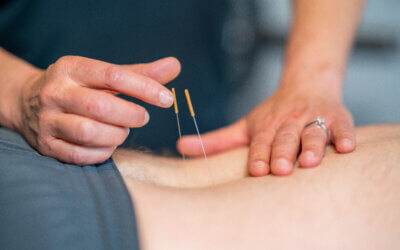The ankle is a complex structure that can be vulnerable to a number of conditions affecting the joints. It’s easy to injure your ankle, especially if you’re physically active. You can easily sprain your ankle from running or jumping. Physical therapists can help determine the cause of sudden pain in the back of the ankle, but there are a few common causes of this kind of pain. The most common type of ankle injury is a sprain.
Are you wondering if a sprain is the cause of your sudden pain in the back of the ankle? The good news is that physical therapy can help treat this condition effectively.
What is an ankle sprain?
A sprain refers to any injury to the ligaments. An ankle sprain occurs when you overstretch or even tear the ligaments that support the ankle joint. This can usually occur when you pivot suddenly and twist your ankle.
How can physical therapy help treat an ankle sprain?
Ankle sprains can range from mild to severe depending on the extent of the ligament damage. A physical therapist can employ a variety of techniques to manage your ankle pain. These techniques can even help speed up your recovery and promote healing. The most common physical therapy techniques for an ankle sprain include:
- Joint mobilization — Joint mobilization is an effective technique to treat ankle pain. A sprained ankle can cause the joint to become stiff while healing. This can restrict mobility and reduce the range of motion of your ankle joint. During joint mobilization, a physical therapist will loosen the ankle joint with manual manipulation. This can reduce the tension in the ankle, promote flexibility and can also decrease pain.
- Therapeutic exercises — A physical therapist can educate you in specific therapeutic exercises intended to strengthen the muscles that support the ankle joint. This added support may reduce the tension in your ankle joint caused by a sprain. It’s important to strengthen your ankle so that you don’t reinjure the ligaments after your sprain has healed.
- Electrical stimulation — While it might sound intimidating, electrical stimulation techniques are a safe approach to pain management. This technique is never intended to cause any pain; in fact, it is meant to reduce pain. Electrical stimulation works by attaching adhesive electrodes to the injured ankle. These electrodes can cause a natural pain reduction effect by stimulating the ankle’s sensory nerves.
Seeking relief for sudden pain in the back of your ankle? Continuum Wellness can help
Sudden ankle pain can put a damper on your entire day. If walking is uncomfortable or even painful, our team at Continuum Wellness is ready to help. We have years of experience managing foot and ankle injuries like sprains. We are prepared to build you a personalized treatment plan that promotes the recovery of your ankle and gets you back on your feet with confidence.
Contact our team today for more information about sudden pain in the back of the ankle or to schedule an initial appointment.



